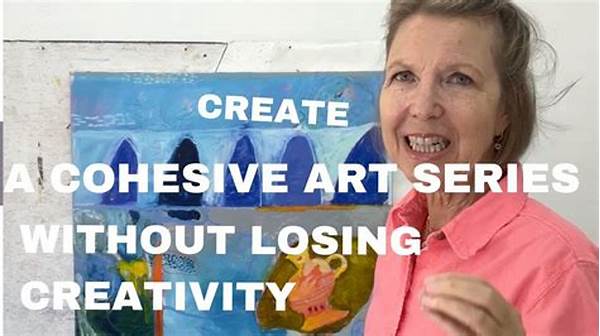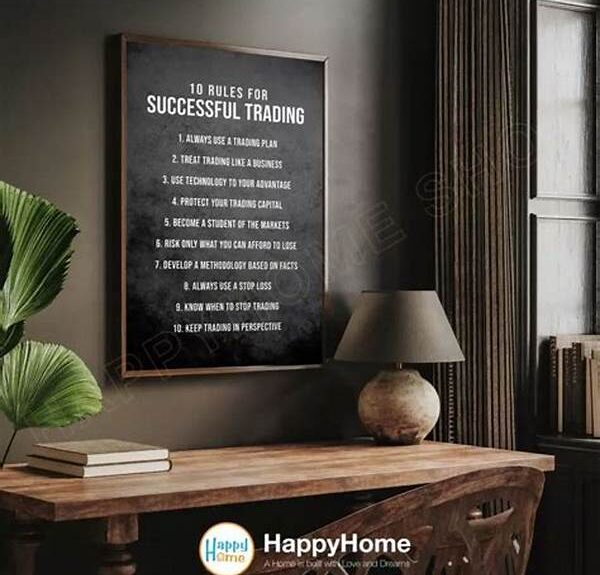Creating a series of artworks that are tied together by a cohesive theme or style can be a rewarding artistic endeavor. It allows artists to explore a subject in depth, create a narrative through their work, and present a unified collection that speaks as a whole. Achieving cohesion in an art series requires careful planning, creativity, and consistency. This article explores various strategies and considerations that will guide you on how to develop a cohesive art series.
Read Now : Passive Income Streams For Artists
Understanding Artistic Cohesion
To develop a cohesive art series, one must first understand the elements that contribute to cohesion. These elements can include theme, color palette, technique, and material. When developing your series, it’s important to select a theme or concept that resonates with you and can be explored across multiple pieces. This theme serves as the backbone of your series, linking each piece together to form a narrative or explore a common subject. Additionally, choosing a consistent color palette and technique will reinforce the connection among the artworks. You should also consider the materials you use, ensuring they align with the message and aesthetic of your series. Ultimately, how to develop a cohesive art series is about creating harmony among these elements to produce a collection that is greater than the sum of its parts.
Strategies for a Consistent Art Series
1. Defining Your Concept: Clearly define the concept or theme of your series. This will serve as the foundation and guide for all the pieces you create.
2. Maintaining a Consistent Style: Choose a specific artistic style or medium to use throughout the series. This helps unify the pieces and create a recognizable thread.
3. Developing a Cohesive Color Palette: Select a color palette that complements your theme and use it consistently across your artworks to enhance cohesion.
4. Exploring Variations: While maintaining consistency, explore variations within your theme to keep the series interesting and dynamic.
5. Creating a Reflection of Process: Document your artistic process and decisions. This reflection supports your intent and provides depth to how to develop a cohesive art series.
Building Your Art Series Collection
When considering how to develop a cohesive art series, it’s crucial to approach your collection as a unified body of work. Begin by mapping out your ideas on paper or digitally to visualize the relationships between each piece. Sketches and rough drafts can help refine your ideas and identify any gaps or repetitive elements. Organizing your thoughts and intentions in this manner ensures that each piece contributes meaningfully to the overall concept.
Equally important is reflecting on how the audience will perceive your series. Think about the story you want to tell and the emotions or reactions you wish to evoke. Presenting your work in a logical order or cluster can help guide the viewer’s experience. This careful curation underscores how to develop a cohesive art series by presenting it effectively, ensuring that the series communicates its intended message and engages its audience.
Tips for Developing Artistic Cohesion
1. Unity in Materials: Choose materials that align with your vision, ensuring that they complement rather than compete with your theme.
2. Focus on Detail: Pay attention to the small details that tie your pieces together, enhancing the subtle connections within your series.
3. Communicate Emotion: Use your artwork to convey the emotions you want the audience to feel, linking them back to the central theme.
4. Experiment with Form: While maintaining cohesion, allow experimentation with form and composition to add visual interest.
5. Reflection and Intention: Reflect on your intentions regularly to stay true to your concept and evaluate your progress in cohesion.
Read Now : Strategies For Selling Digital Paintings
6. Feedback and Revision: Seek feedback from peers or mentors to understand different perspectives and refine your work.
7. Evolving Motifs: Use recurring motifs that evolve throughout the series, enriching the narrative and adding depth.
8. Thematic Symbolism: Incorporate symbolism that reinforces your theme and resonates across your series.
9. Document Progress: Keep a record of your artistic journey, documenting insights and challenges in how to develop a cohesive art series.
10. Presentation and Context: Consider the presentation context, whether a gallery or online, and adapt your series to the space for optimal impact.
Exploring the Artistic Journey
The journey of how to develop a cohesive art series goes beyond just the creation of artwork. It involves a deep exploration of your artistic identity, honing in on what makes your expression unique. As an artist, your voice is central to each piece you create, and a cohesive series amplifies this voice through deliberate choices in theme, style, and execution. Engaging with this process requires a balance between discipline and creative freedom, ensuring that each work honors the concept while allowing for natural artistic growth.
The process is both introspective and collaborative. While you must delve into your personal motivations and inspirations, the input and experiences of other artists or viewers can provide valuable perspectives. Collaboration or feedback can bring fresh elements to your work while reinforcing the core of your series. This interplay between solitude and community is essential in understanding how to develop a cohesive art series.
Presenting Your Cohesive Art Series
The final presentation of your art series is an integral part of the cohesive journey. When showcasing your work, consider how each piece interacts with the others and the space they inhabit. The arrangement can influence how viewers engage with your series, allowing them to experience the flow and connection you intended. Whether displayed in a gallery, a digital platform, or an alternative space, the presentation should echo the narrative your series conveys.
In conclusion, developing a cohesive art series involves careful planning, creativity, and a deep understanding of your artistic vision. By focusing on consistent themes, styles, and materials, and reflecting on audience engagement, you can create a series that resonates on multiple levels. As you explore how to develop a cohesive art series, remember that each step, from conception to exhibition, is a part of the larger artistic process, contributing to a harmonious and impactful body of work.
Conclusion on Cohesive Art Series Development
In summary, how to develop a cohesive art series is all about finding the delicate balance between consistency and creativity. Begin with a strong concept or theme that you feel passionately about, and let this guide every artistic decision. Consistency in style, technique, and color will help bind your pieces together, creating a series that feels complete and thoughtful. Varied exploration within your chosen theme ensures that each work remains unique and engaging, adding depth and variation to your collection.
Your art series’ presentation can significantly enhance its cohesion and impact, requiring careful attention to detail and audience engagement. The creation of a cohesive art series is an evolving process that invites you to refine your artistic voice and explore the narratives that resonate with you and your audience. Remember that whether you are just starting or revisiting past series, each experience and iteration brings you closer to mastering how to develop a cohesive art series that is deeply personal and universally compelling.



